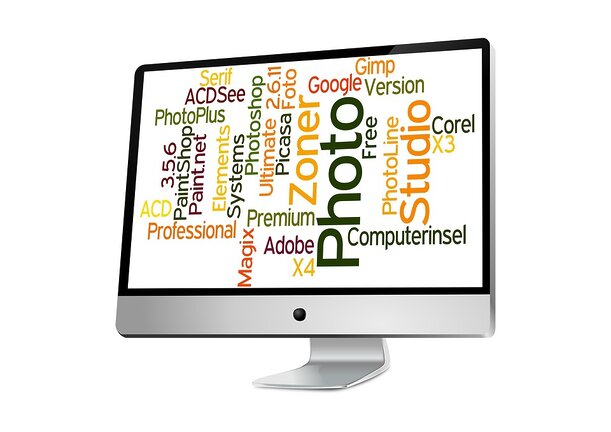GIMP for Web Design: How to Create Websites with Stunning Graphics
Table of Contents:
1. Introduction
2. Getting Started with GIMP
2.1. Installation
2.2. Interface Overview
2.3. Creating a New Project
3. Working with Graphics in GIMP
3.1. Importing Images
3.2. Editing and Manipulating Images
3.3. Adding Text and Shapes
4. Designing Web Layouts
4.1. Creating a Wireframe
4.2. Designing Header and Navigation
4.3. Crafting Content Sections
4.4. Styling Footer and Sidebars
5. Optimizing Graphics for the Web
5.1. Resizing and Cropping Images
5.2. Compressing Images for Faster Loading
5.3. Exporting Images in Web-Friendly Formats
6. Creating Interactive Elements
6.1. Adding Hyperlinks
6.2. Creating Buttons and Call-to-Action Elements
7. Finalizing and Exporting the Web Design
7.1. Reviewing the Design
7.2. Saving and Exporting the Project
8. Conclusion
1. Introduction:
In this guide, we will explore how to use GIMP, a powerful open-source image editing software, to create stunning graphics for web design. We will cover various aspects of web design, including importing and manipulating images, designing web layouts, optimizing graphics for the web, creating interactive elements, and finalizing the design. By following this guide, you will learn how to create visually appealing websites using GIMP.
2. Getting Started with GIMP:
2.1. Installation:
To begin using GIMP, you need to install it on your computer. Visit the official GIMP website (https://www.gimp.org/) and download the latest version compatible with your operating system. Follow the installation instructions provided by the installer.
2.2. Interface Overview:
Once GIMP is installed, launch the software. The interface consists of various windows, including the Toolbox, Layers, and Brushes. Familiarize yourself with these windows and learn how to navigate through them for efficient web design.
2.3. Creating a New Project:
To start a new web design project, go to File > New. Set the desired canvas size, resolution, and color mode. Click "OK" to create a new project.
3. Working with Graphics in GIMP:
3.1. Importing Images:
To import images into your project, go to File > Open and browse for the desired image file. Select the image and click "Open" to import it into GIMP.
3.2. Editing and Manipulating Images:
Use various tools and filters in GIMP to edit and manipulate images. Adjust brightness, contrast, colors, and apply filters to enhance the visual appeal of your graphics.
3.3. Adding Text and Shapes:
To add text to your design, select the Text tool from the Toolbox, click on the canvas, and start typing. Customize the font, size, and color of the text using the options available in the Text tool settings.
To add shapes, use the Shape tool from the Toolbox. Choose a shape, click and drag on the canvas to create it, and customize its properties using the Shape tool settings.
4. Designing Web Layouts:
4.1. Creating a Wireframe:
Before designing the actual layout, create a wireframe to plan the structure of your web page. Use basic shapes and lines to represent different sections and elements.
4.2. Designing Header and Navigation:
Design the header section and navigation menu of your web page. Use the Rectangle Select tool to create rectangles for the header and navigation elements. Customize the colors and add text for navigation links.
4.3. Crafting Content Sections:
Design different content sections of your web page using a combination of images, text, and shapes. Arrange them in a visually appealing manner to create an engaging layout.
4.4. Styling Footer and Sidebars:
Complete the web layout by designing the footer and sidebars. Add relevant information, links, and design elements to these sections to complement the overall design.
5. Optimizing Graphics for the Web:
5.1. Resizing and Cropping Images:
Resize and crop images to fit the desired dimensions of your web page. Use the Scale and Crop tools to adjust the size and composition of images.
5.2. Compressing Images for Faster Loading:
To ensure fast loading times, compress images without compromising quality. Use the Export As option to save images in web-friendly formats like JPEG or PNG. Adjust the compression level to balance file size and image quality.
5.3. Exporting Images in Web-Friendly Formats:
When exporting images, use the Export As option to save them in formats suitable for the web. Choose an appropriate file format, adjust the settings, and click "Export" to save the image.
6. Creating Interactive Elements:
6.1. Adding Hyperlinks:
To create hyperlinks, use the Text tool to type the desired text. Select the text, click on the "Create a New Link" button in the Toolbox, and specify the target URL for the hyperlink.
6.2. Creating Buttons and Call-to-Action Elements:
Design buttons and call-to-action elements to make your web design more interactive. Use shapes, text, and colors to create visually appealing buttons. Add relevant text and link them to appropriate web pages or actions.
7. Finalizing and Exporting the Web Design:
7.1. Reviewing the Design:
Review your web design to ensure all elements are in place and visually appealing. Make any necessary adjustments to finalize the design.
7.2. Saving and Exporting the Project:
Save your project in GIMP's native format (.xcf) to preserve the layers and editing capabilities. When ready to export the final design, go to File > Export As and choose an appropriate file format (e.g., PNG or JPEG). Set the desired export settings and click "Export" to save the web design.
8. Conclusion:
By following this guide, you have learned how to use GIMP for web design and create stunning graphics for websites. Explore different design possibilities, experiment with various tools and techniques, and unleash your creativity to craft visually appealing web designs with GIMP.
